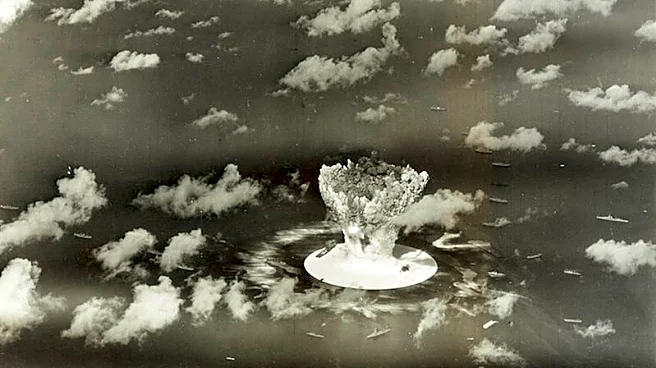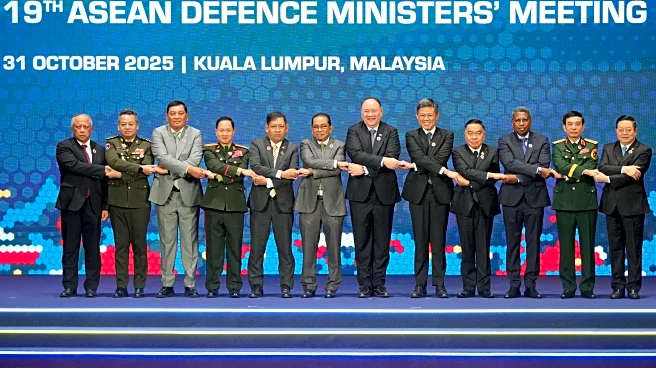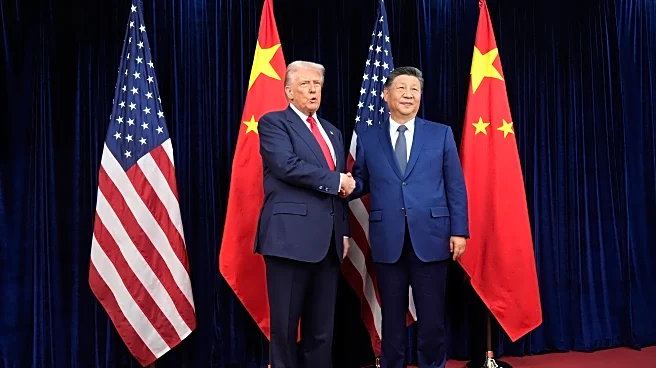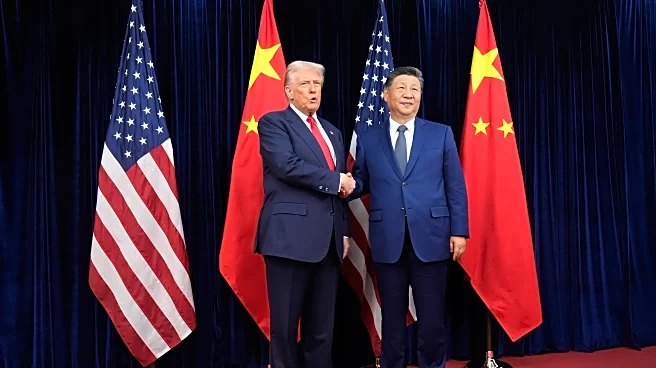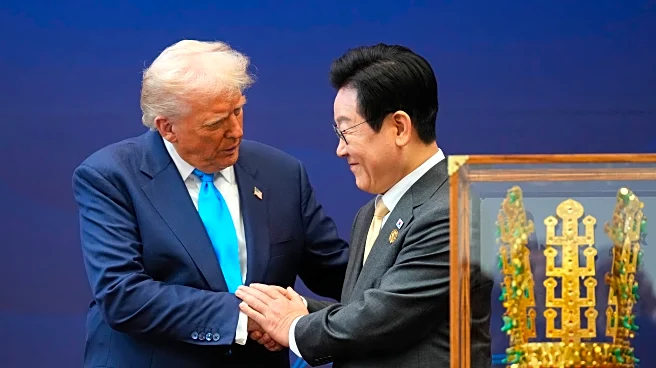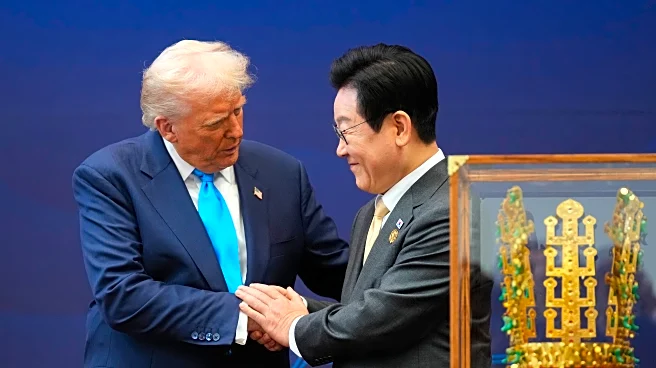What's Happening?
Chinese President Xi Jinping hosted a large military parade in Beijing's Tiananmen Square, marking 80 years since Japan's surrender in World War II. The parade featured advanced military technologies, including fighter jets, hypersonic missiles, and AI-powered
drones. High-profile adversaries such as Russian President Vladimir Putin and North Korean leader Kim Jong Un attended the event, signaling a strategic alliance. U.S. analysts and lawmakers have expressed concerns about China's accelerated military modernization and its implications for global security. They emphasize the need for the U.S. to expand its weapons arsenal and strengthen international partnerships to counter China's rising influence and deter potential aggression, particularly towards Taiwan.
Why It's Important?
The parade underscores China's growing military capabilities and its strategic intent to challenge the U.S.-led global order. The presence of Russian and North Korean leaders highlights the formation of an alternative international alignment, which could reshape geopolitical dynamics. For the U.S., this development necessitates a reassessment of its defense strategies and international partnerships to address the challenges posed by China's expanding arsenal. The event also highlights the urgency for the U.S. to enhance its deterrence capabilities, particularly in the Indo-Pacific region, to prevent potential conflicts and maintain stability.
What's Next?
The U.S. may need to increase its defense spending and accelerate the development of next-generation warfighting technologies to counter China's growing military capabilities. Strengthening alliances and improving communication with partners in the region will be crucial to creating a robust deterrence strategy. The international community will likely monitor China's military developments closely, as they have the potential to alter the strategic landscape in the Indo-Pacific and beyond. The U.S. must also address its cyber vulnerabilities, as China poses a significant threat in this domain.
Beyond the Headlines
The parade reflects China's strategic messaging to deter U.S. interventions and assert regional ambitions. The event serves as a reminder of the challenges posed by China's military modernization and the need for the U.S. to adapt its defense strategies accordingly. The emphasis on advanced technologies, such as AI and drones, suggests a shift towards more autonomous and AI-driven military operations, which could lead to new forms of conflict and escalation. The international community must consider the implications of China's growing military capabilities and the potential for increased tensions in the region.


